of Three Farms in June 2011
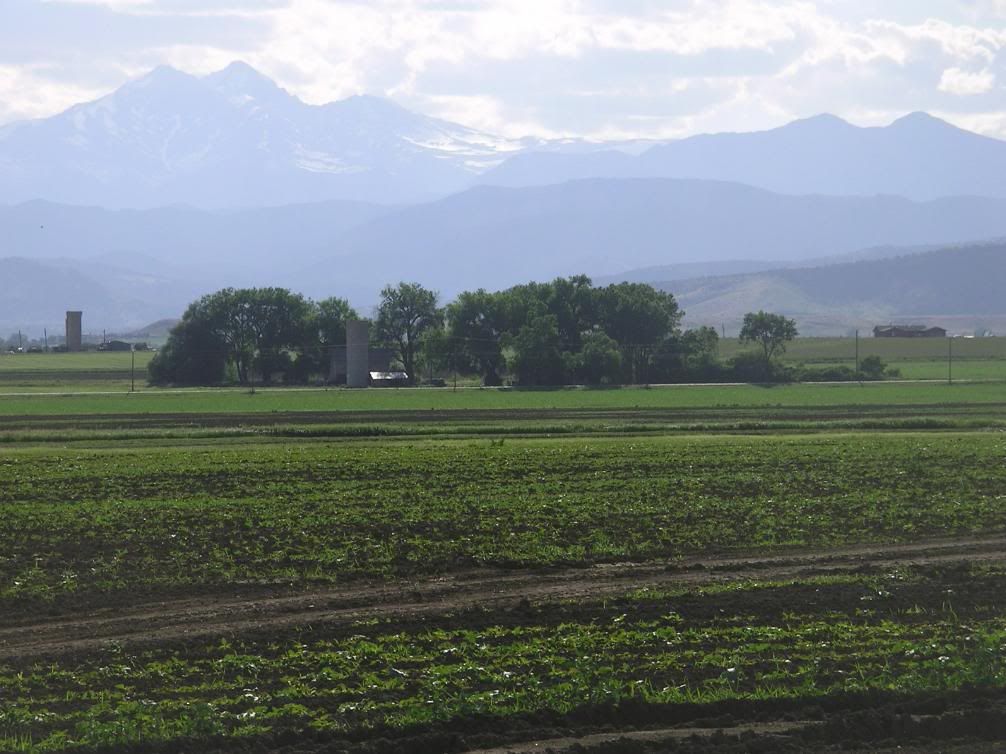
Out of 94,000 acres of Boulder County Open Space land, about 24,000 acres are devoted to agriculture. The BCOS program values agriculture as an important resource to the community in preserving its heritage as a food producing region and for providing ongoing food security.
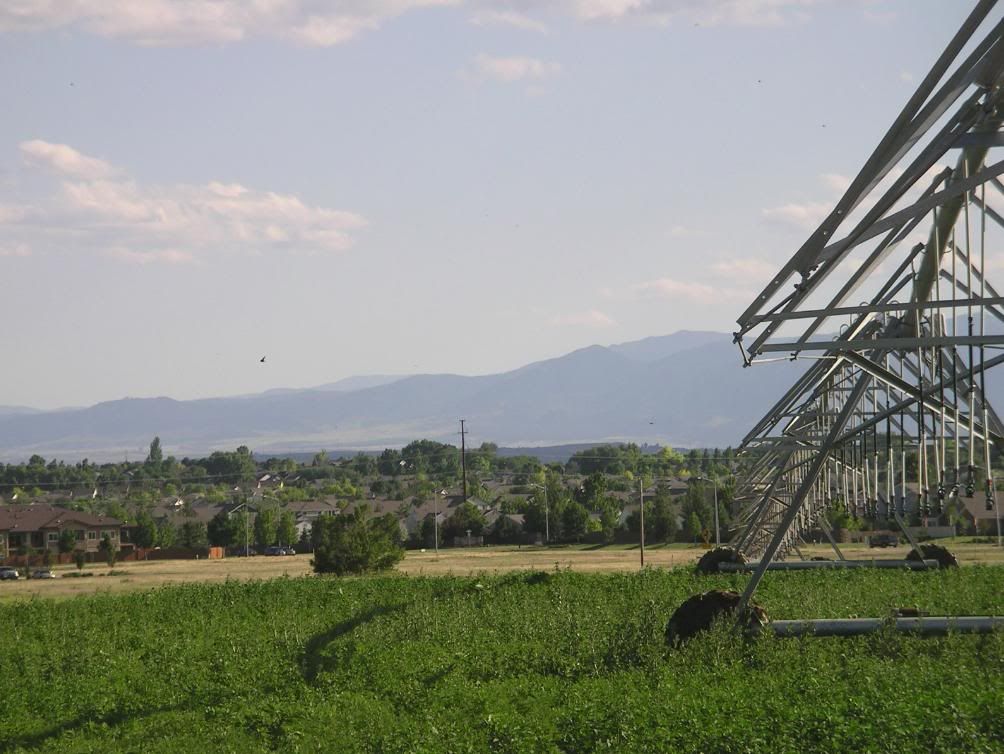
This area has faced horrendous development challenges, squeezing agriculture.
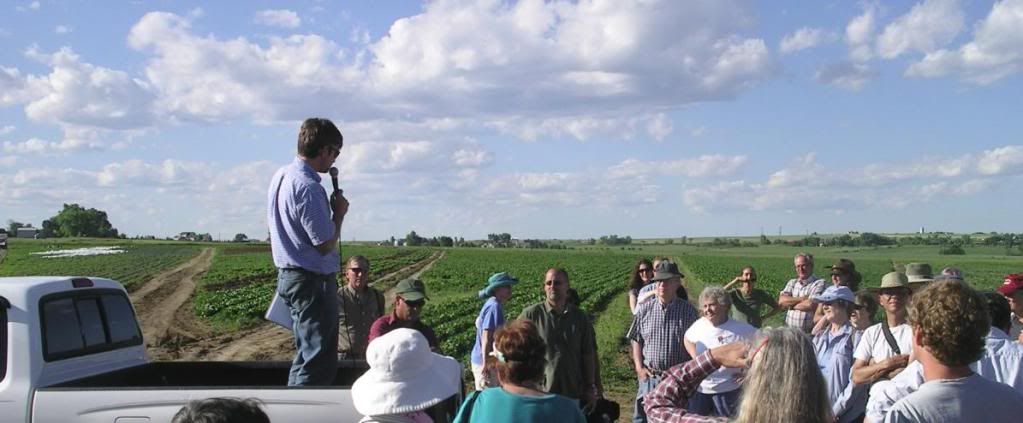
My county is unique in a number of ways. Land is extremely expensive due to the desirable climate, amenities, and natural beauty, but in the mid-1900's residents with wise foresight (including Dr. Albert Bartlett) began preservation of the land to protect it from development interests, a practice which continues to this day. Residents vote to tax themselves to preserve the land.
Local leaders and residents also realize the importance of maintaining agriculture on this preserved land, as much as possible. Since the community owns the land, residents take an interest in the farming methods and production taking place, so there are periodic panel discussions and public tours for residents.
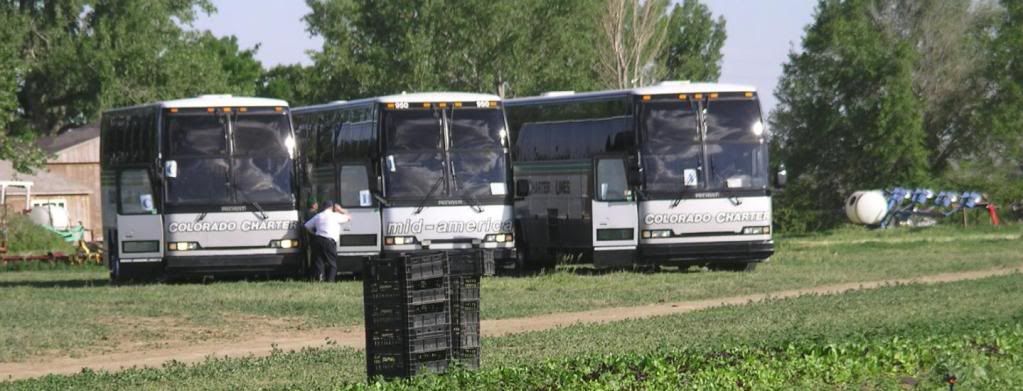
In June, I participated in a Boulder County Open Space bus tour of local open space farmlands, which visited three properties and interviewed their respective farmers.
This is an aware, progressive community, so sometimes the interest taken by our public is the bane of the local farmer, as he or she gets confronted about controversial issues and practices. These past several years, this focus has been on growing GMO sugar beets. Currently, no GMO sugar beets are being grown on public space land, and a community panel is debating the issue, set to make a decision later this year.
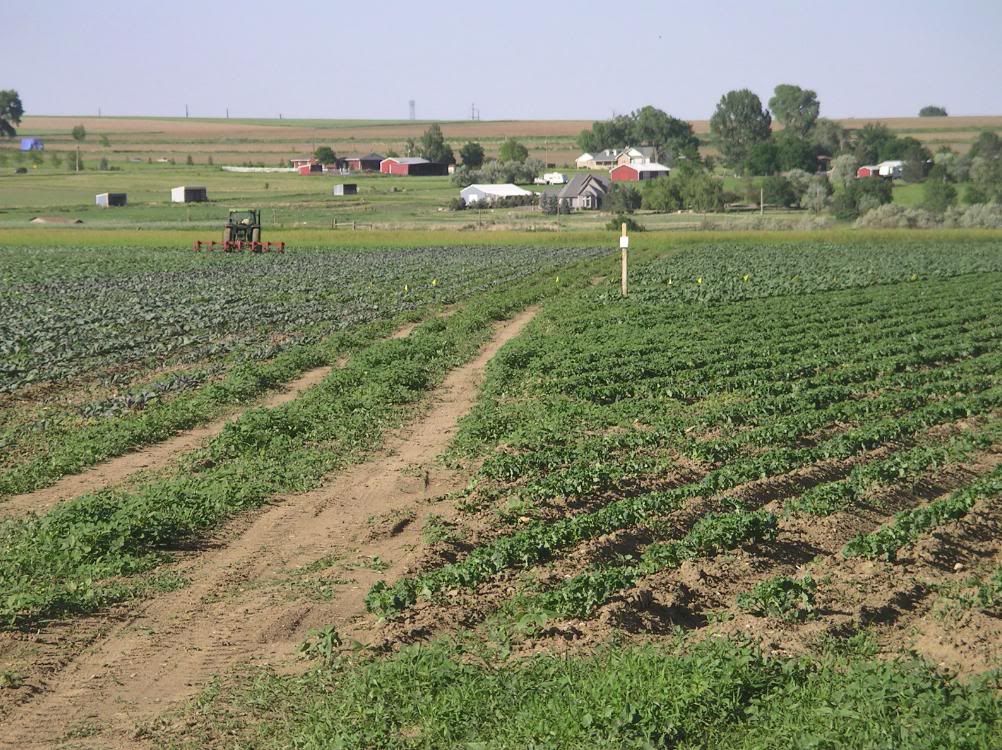
Most of the photos in this post are from a 140-acre vegetable farm using a ditch-fed pond which supplies a center pivot for irrigation. Vegetables being grown include cabbage, kale, beans, spinach, beets, lettuce, onion, snow peas, cucumber, pumpkins, corn, summer squash, radish, dill, cilantro, and chard.
Onions, potatoes, and cabbage are three of the top vegetable crops grown in Colorado.
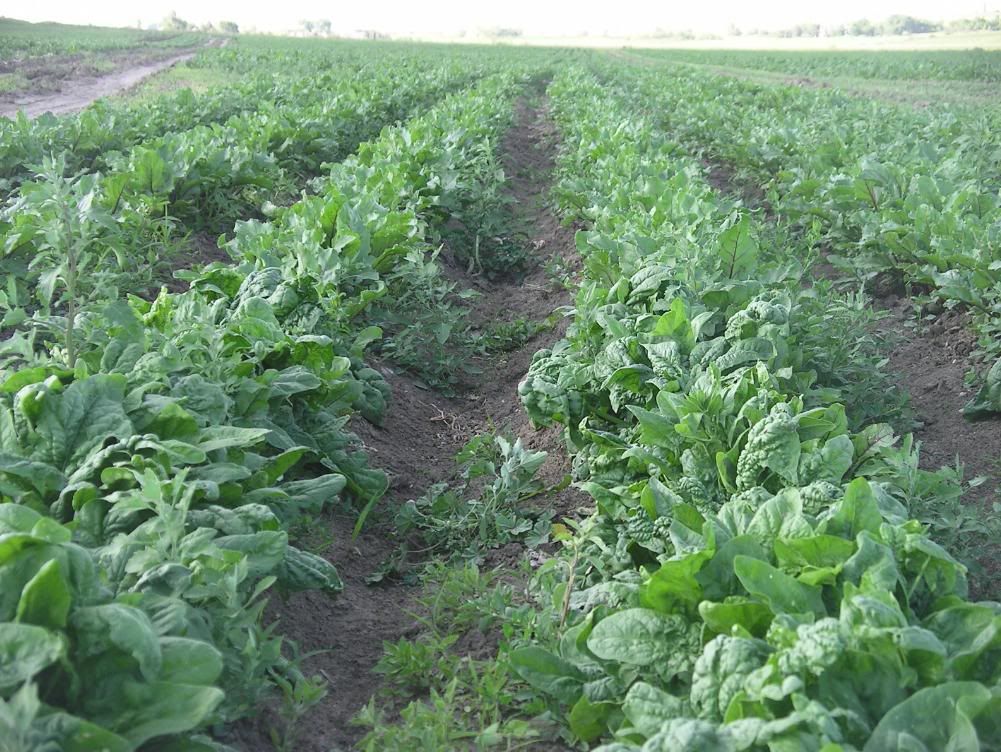
The vegetable farmer has progressed from supplying farmer's markets and wholesale outlets to working almost exclusively as a supplier for Whole Foods, which picks up produce at his farm twice a week in a refrigerated 18-wheeler and takes it to a store approximately ten miles away. Ninety-five percent of the farm's produce is used locally.
The labor-intensive operation employs forty-five laborers, but is very small in comparison to vegetable operations in California, for example. He also mentioned the efficiency of large operations, citing Yuma, Arizona's winter production of lettuce, where 1 million pounds per day is harvested and shipped around the world within 48-hours.
The farmer says that the paper-work requirements for organic farmers is mind-boggling. His goal is to make the plants as healthy as possible so they can defend themselves against pests. He advises others not to go out and borrow money to do this.
He mentioned the cost of a few pieces of farm equipment. A new disc is $20,000, a baler is $75,000, and a tractor more than $100,000.
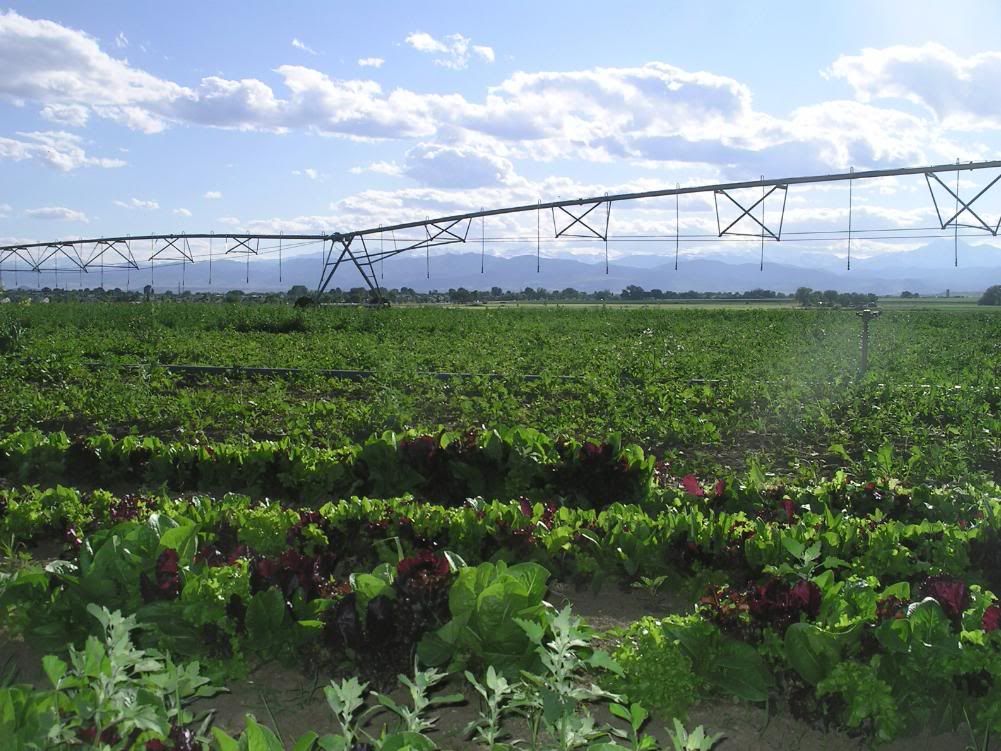
He couldn't praise his center-pivot irrigation system enough as the biggest successful contributor to his operation. It utilized an NRCS program for funding.
- It is a Lindsay system
- 1,100-feet
- 850 gallons/minute
- cost was $150,000
- uses all surface water via a ditch-fed pond
- 3-phase electrical required lots of copper
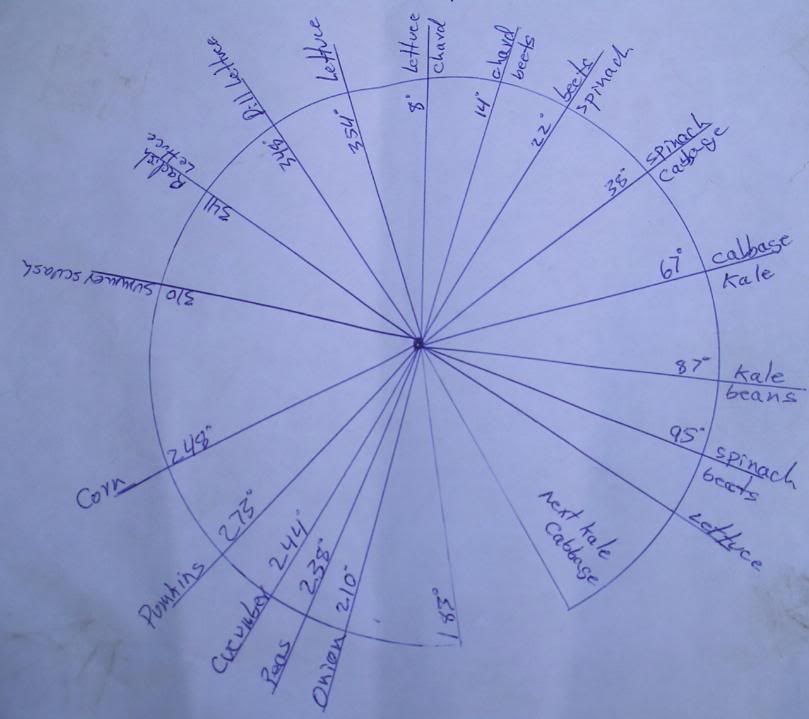
The above diagram is the schematic for the Lindsay Manufacturing Center pivot irrigation system: Cabbage, kale, beans, spinach, beets, lettuce, onion, peas, cucumber, pumpkins, corn, summer squash, radish, dill, chard.
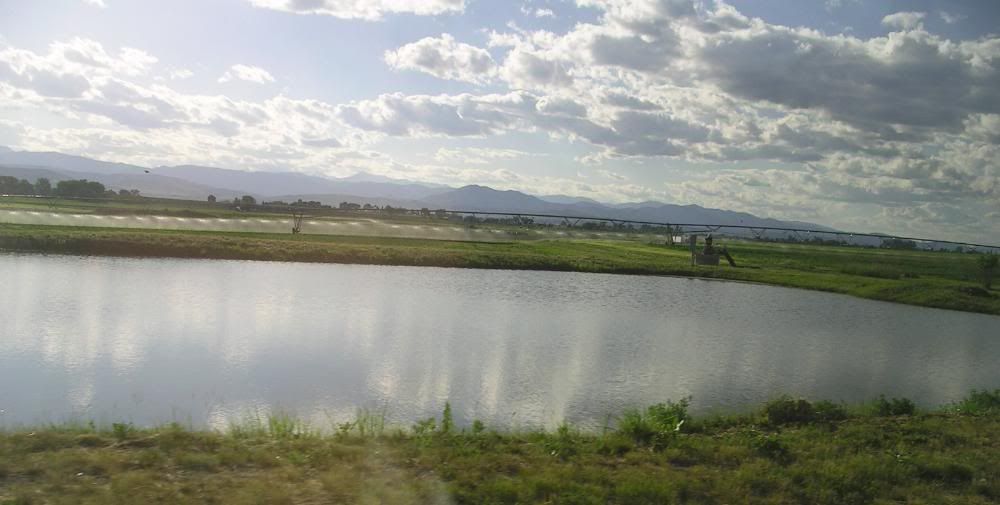
This is the holding pond which supplies the water for the center pivot irrigation.

The system of ditches used for irrigation by agriculture in Boulder County was started in the 1850's. This photo shows one of the ditches still in use today.
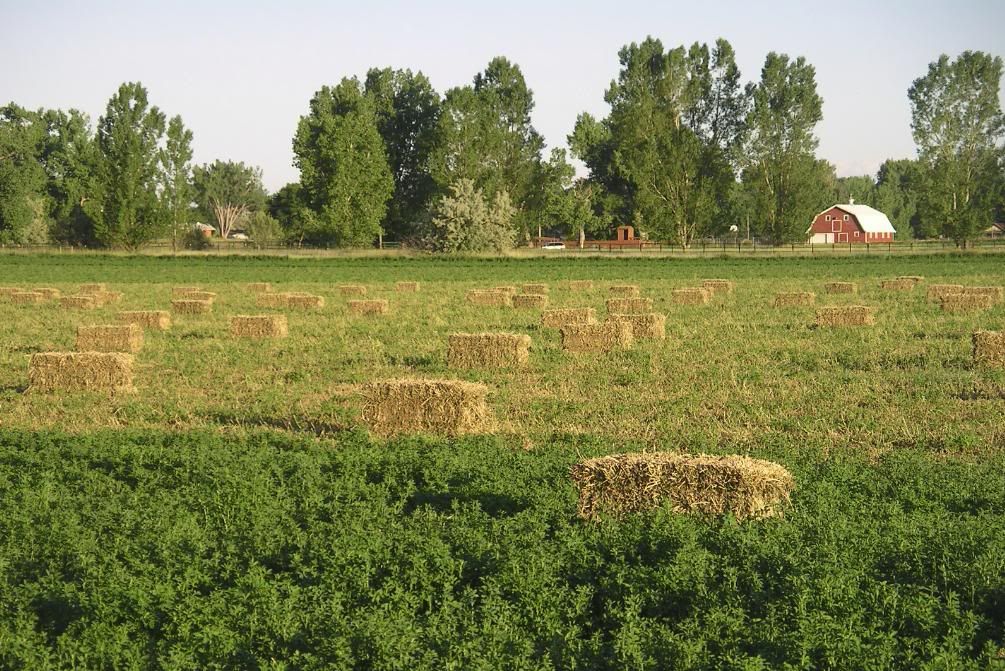
The farmer who farms the land pictured above, is a retired engineer who raises cattle in Wyoming and Boulder County, transporting them back and forth. He raises grass fed beef. One problem he described is that it has become nearly impossible to move farm equipment over the public roads prior to 8 o'clock at night due to congestion on the highways.
Another farmer who was interviewed was the grandson of the man who started the sugar beet factory in nearby Longmont, Colorado. He reported that his fuel costs for farming this season would total $25,000. He supplies barley for the Coors Brewery to a receiving station one-half mile away. He transports sugar beets which he grows to a center five miles away. Wheat is purchased by ConAgra in Commerce City, Colorado which is 31 miles away.
Other revenue being generated by Boulder County Open Space land currently includes:
- $800,000 per year from 120 oil and gas wells
- $36,000 per year from cell phone towers
K. McDonald
Also see:
- View from the Real World: What are Concerns of Boulder County Open Space Farmers?
- Black Cat Farm and Restaurant: A Comprehensive Organic Farm Tour Providing a Wealth of Information on Organic Farming Methods
- Gary Nabhan in Boulder at Abbondanza and the Importance of Seed Diversity
- A Late Season Boulder Farmers Market Visit